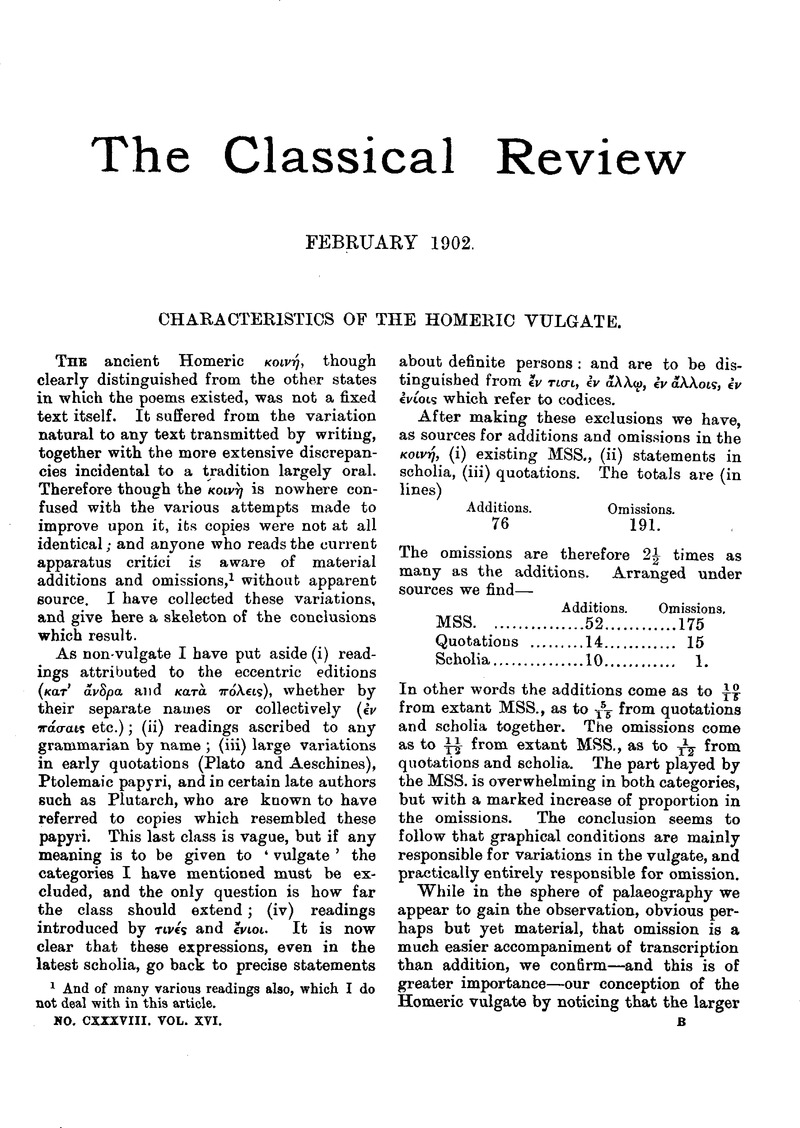No CrossRef data available.
Published online by Cambridge University Press: 27 October 2009

page 1 note 1 And of many various readings also, which I do not deal with in this article.
page 2 note 1 I am acquainted with Hoffmann's, (Φ und X derllias, 1864, p. 89sq.)Google Scholar and Molhuysen's, (De tribus Homeri Odysseae codicibus antiquissimis, 1896, p. 11 sq.)Google Scholar attempts at classification. A satisfactory collection must of course extend over the whole poem and all available MSS.
page 2 note 2 Clear graphical omissions, which exist in great abundance, and are caused not only by homoeoteleuton but by homoearchon and homoeomeson, are excluded from this enquiry.
page 2 note 3 Such a scribe or reader appears to announce himself in three epigrams in the Palatine Anthology ix. 36, 37, 38. The third is the most explicit: ![]() Cometas' metaphors do not leave it quite clear how far his critical activity proceeded, but he evidently ‘used the knife’ in one sense or another, and may have justified Timon's warning to Aratus.
Cometas' metaphors do not leave it quite clear how far his critical activity proceeded, but he evidently ‘used the knife’ in one sense or another, and may have justified Timon's warning to Aratus.
page 3 note 1 There is little distinction to be drawn between MS. and MS. in the matter of additions and omissions. The Townley MS. appears to come first with eight omissions, and Ge, Mc, and 05 to follow with five; among late papyri the Syriac palimpsest adds most lines.